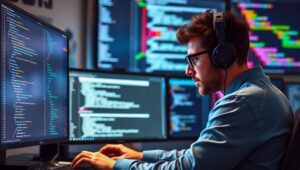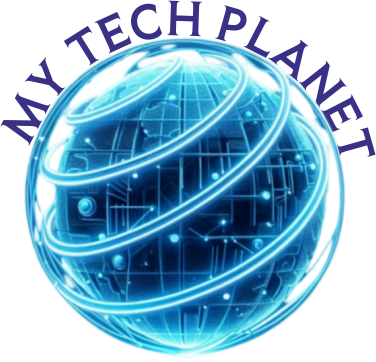June 3, 2025
The Unforeseen Consequences of Massive IoT Deployment (2027)
June 3, 2025
Preparing for a Future Dominated by IoT (Skills, Policies – 2025)
June 3, 2025
The Intersection of Biotechnology and Cybersecurity (Bio-Hacking 2029)
June 3, 2025
AI by 2030: 5 Bold Predictions That Will Change Everything
June 3, 2025
The Rise of Specialized vs. Generalist Developers (2026)
June 3, 2025
The “Internet of Everything”: Where Do We Draw the Line? (2028 Debate)
June 3, 2025
Securing Space Assets from Cyber Attacks (2027)
June 3, 2025
Computing and the Future of Democracy (2028 Considerations)
June 3, 2025
Measuring True AI Progress Beyond Benchmarks (Future Metrics)
June 3, 2025
Lifelong Learning Strategies for Software Developers (2025+)

The Unforeseen Consequences of Massive IoT Deployment (2027) The year is 2027. The Internet of Things (IoT) has permeated every facet of our lives. From smart homes that anticipate our needs to smart cities optimizing traffic flow, the promise of a seamlessly connected world has largely been realized. However, this pervasive connectivity has also ushered in a wave of unforeseen consequences, challenging our understanding of security, privacy, and societal well-being. Security Vulnerabilities: A Hacker’s Paradise The exponential growth of IoT devices has created a significantly larger attack surface for malicious actors. Unlike traditional computers, many IoT devices lack robust security … Read more
Algorithms, Digital Divide, Future, IoT, Privacy, Security, Smart Cities, Technology

June 3, 2025
Preparing for a Future Dominated by IoT (Skills, Policies – 2025)
Mathew
Preparing for a Future Dominated by IoT (Skills, Policies – 2025) The Internet of Things (IoT) is rapidly transforming our world, connecting devices and systems in ways that were once unimaginable. As we move closer to 2025, it’s crucial to understand the implications of an IoT-dominated future and how to prepare for it. This involves identifying the necessary skills, understanding evolving policies, and anticipating the challenges and opportunities that lie ahead. The Proliferation of IoT Devices By 2025, the number of IoT devices is projected to reach tens of billions, encompassing everything from smart home appliances and wearable technology to … Read more
AI, Cybersecurity, data, Future, Internet of Things, IoT, Policy, skills, Technology

June 3, 2025
The Intersection of Biotechnology and Cybersecurity (Bio-Hacking 2029)
Mathew
The Intersection of Biotechnology and Cybersecurity (Bio-Hacking 2029) In an increasingly interconnected world, the boundaries between technology and biology are blurring. Biotechnology, with its advancements in genetic engineering, personalized medicine, and bio-integrated devices, holds immense promise for improving human health and well-being. However, this progress also introduces novel cybersecurity risks that must be addressed proactively. This article delves into the intersection of biotechnology and cybersecurity, exploring the potential threats and outlining strategies to secure our bio-future. The Convergence of Biotech and Cybersecurity The convergence of biotechnology and cybersecurity stems from the increasing reliance on digital systems in biological research, healthcare, … Read more
Bio-Hacking, biotechnology, Cybersecurity, data security, Healthcare, Research

June 3, 2025
Lifelong Learning Strategies for Software Developers (2025+)
Lifelong Learning Strategies for Software Developers (2025+) The tech landscape evolves at warp speed. What’s cutting-edge today might be legacy tomorrow. For software developers, lifelong learning isn’t just a career advantage—it’s a necessity. This post outlines actionable strategies to stay ahead in the ever-changing world of software development. 1. Embrace Continuous Skill Upgradation Identify Skill Gaps: Regularly assess your skillset against industry demands. What new frameworks are gaining traction? Which languages are becoming increasingly popular? Use job boards, industry reports, and tech communities to identify areas for improvement. Set SMART Goals: Specific, Measurable, Achievable, Relevant, and Time-bound goals are crucial. … Read more

June 3, 2025
The End of Physical Gadgets? Software and Implants Instead (2040?)
The End of Physical Gadgets? Software and Implants Instead (2040?) Imagine a world without smartphones, smartwatches, or even laptops. Instead, technology seamlessly integrates with our bodies, enhancing our capabilities and connecting us to the digital world in ways we can only dream of today. This isn’t science fiction; it’s a potential future powered by advances in software and implantable technology. Let’s explore this fascinating possibility. The Rise of Software-Defined Living The shift from physical gadgets to software-driven experiences is already underway. Think about it: many of the functions of your smartphone are software-based. Navigation, communication, entertainment – all powered by … Read more

June 3, 2025
How IoT Will Transform Daily Life by 2030
How IoT Will Transform Daily Life by 2030 The Internet of Things (IoT) is rapidly evolving, and by 2030, its impact on daily life will be profound. IoT refers to the network of physical objects—devices, vehicles, buildings, and other items—embedded with sensors, software, and network connectivity that enables these objects to collect and exchange data. This interconnectedness promises to revolutionize various aspects of how we live, work, and interact with our environment. Smart Homes and Urban Living By 2030, smart homes will be ubiquitous, offering unprecedented levels of convenience and efficiency. Imagine waking up to a house that has automatically … Read more
